Overview
You can create traceability between artifacts using the Add as feature in TopTeam.
Traditionally, to create derived artifacts, you would copy the text and paste the copied text into the new artifact. This tedious task becomes simpler and quicker using the Add as feature. It lets you add artifacts and issues efficiently by selecting the text that you want to add as an artifact, and then clicking the Add as option.
- The Add as feature is available in all rich text fields and comments.
- Traceability is created between artifacts.
NOTE: Traceability is created only if the Traceability Rule is defined between the selected record types. To learn more, click here.
This article describes how to use Add as to create artifacts from the selected rich text and comments of existing artifacts and view traceability created between them.
You can also create traceability between artifacts by inserting artifacts using the following methods:
1. Adding Artifacts from a Rich Text Field
The Add as feature will assist you to create an artifact (requirement, repository artifact, or issue) from the selected text and also insert a link in the rich text field of the original artifact.
You can create the following from the rich text:
- Requirement
- Repository Artifact
- Issue
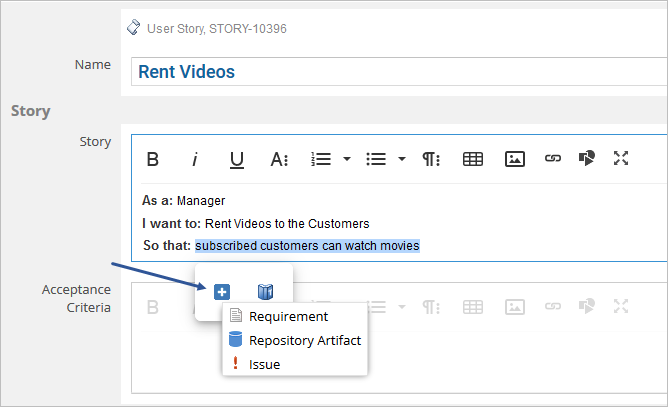
Refer to the table below to understand the purpose of creating each type:
|
Explanation |
|
|
Requirement |
Select this if you wish to add an artifact of any Requirement type. |
|
Repository Artifact |
Select this if you wish to add an artifact of any Repository family. |
|
Issue |
Select this if you wish to add an artifact of any Issue family. |
Here are the steps to add artifacts and view traceability between artifacts. Let’s add a Requirement from the rich text.
Step 1.1. Select an artifact in Repository Explorer and double-click to edit a rich text field of an artifact
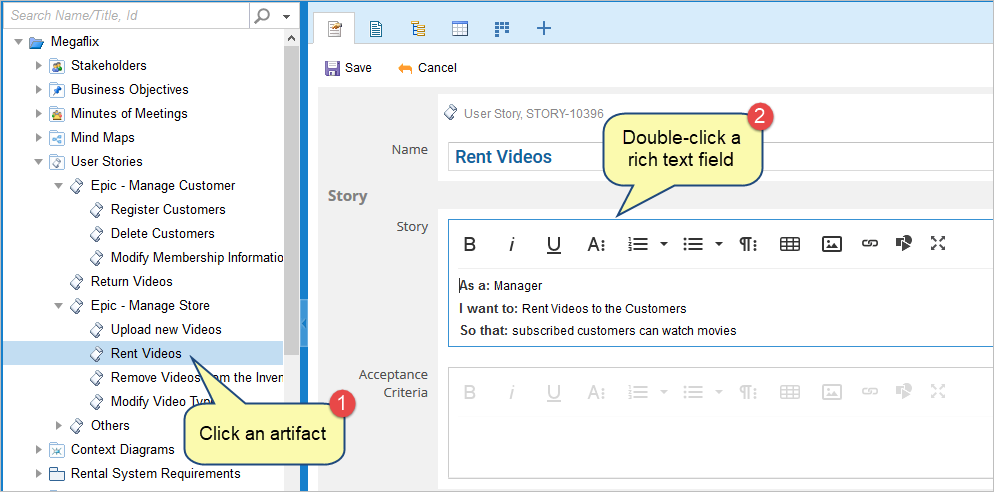
Step 1.2. Refer to the process demonstration below
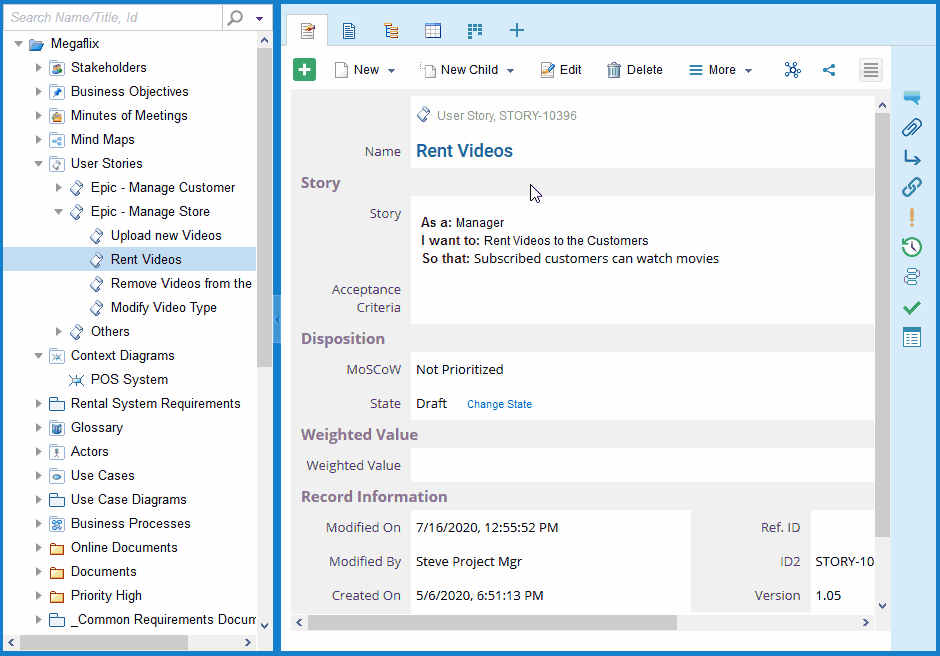
NOTE:
- The Add as menu shows artifact types that are opened earlier.
- If a specific artifact type is selected in the Add as menu, all the data is prepopulated in the window. However, you can modify the details.
- The selected text in the rich text field becomes the Title of the artifact.
- If you select multiple paragraphs in a rich text, the first paragraph will be considered as the Title.
- The newly created artifact is inserted as a Link in the rich text field.
- The system automatically creates the traceability between the two artifact types provided that a linking rule is defined between the artifact types.
The newly created artifact is added under the location specified and traceability will be created between them.
Step 1.3. View traceability between the artifacts, open Traceability Widget in record editor
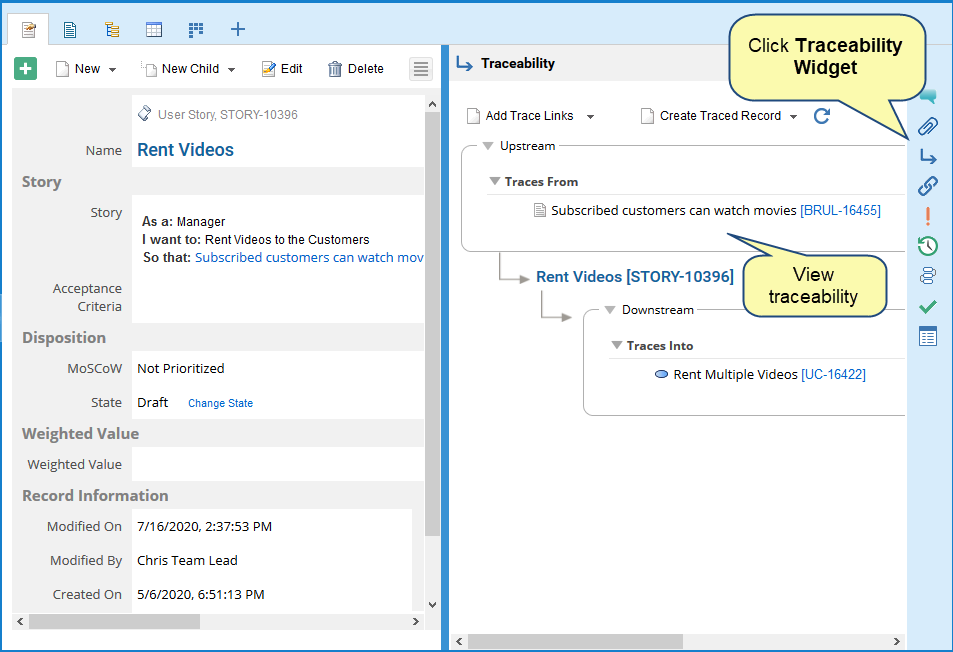
Similarly, you can create traceability for Repository Artifacts and Issues from rich text of an artifact.
2. Adding Artifacts from Comments
The Add as feature helps you to create an artifact (requirement, repository artifact, or issue) from an artifact’s Comments.
You can choose to select either a part of a comment or a complete comment to create an artifact from it.
You can create the following from a Comment’s text:
- Requirement
- Repository Artifact
- Issue
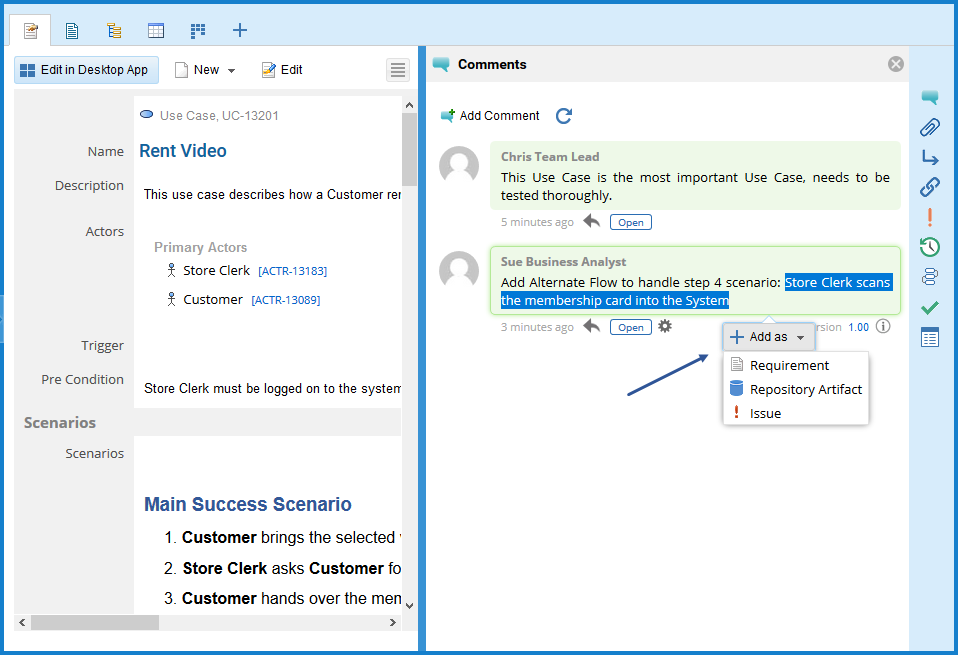
The purpose of each type is similar as mentioned above.
Here are the steps to add artifacts and view traceability between artifacts. Let’s add a Requirement from a comment made on an artifact.
Step 2.1. Select an artifact in Repository Explorer and open the Comments widget
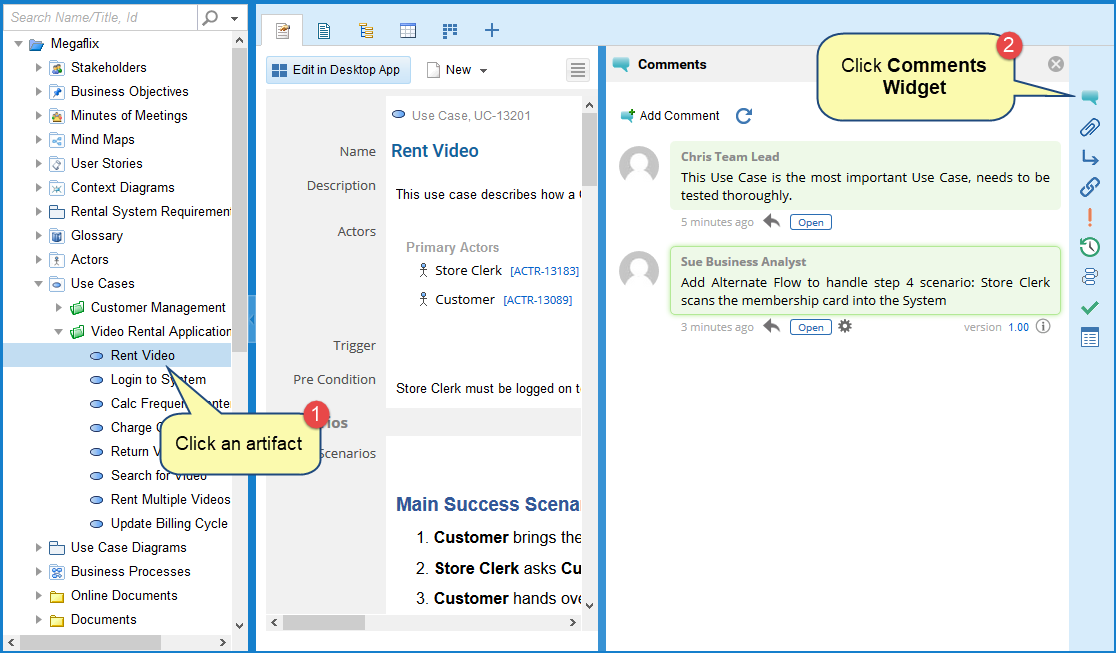
Step 2.2. Select text in a comment for which you want to create an artifact. For further steps, refer to the process demonstration below
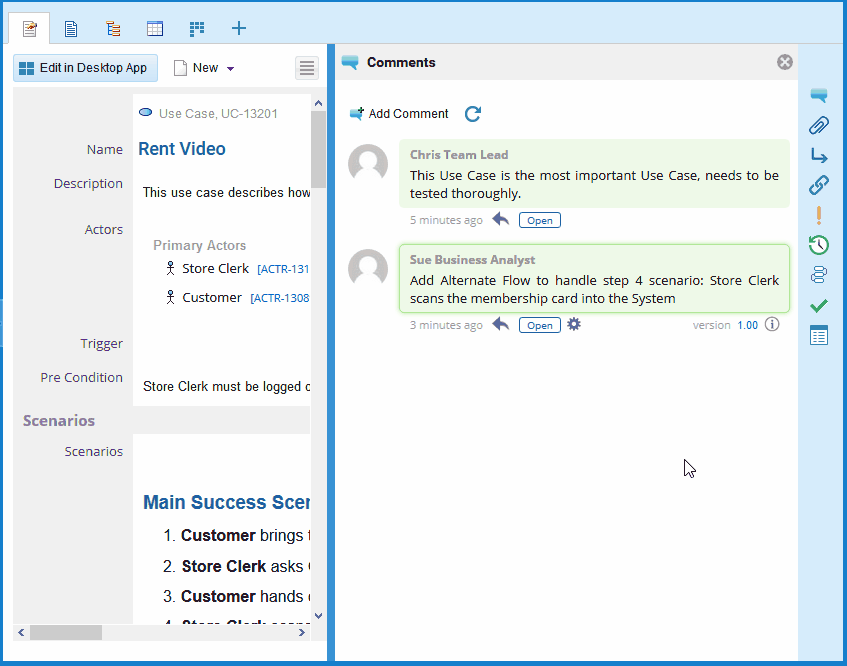
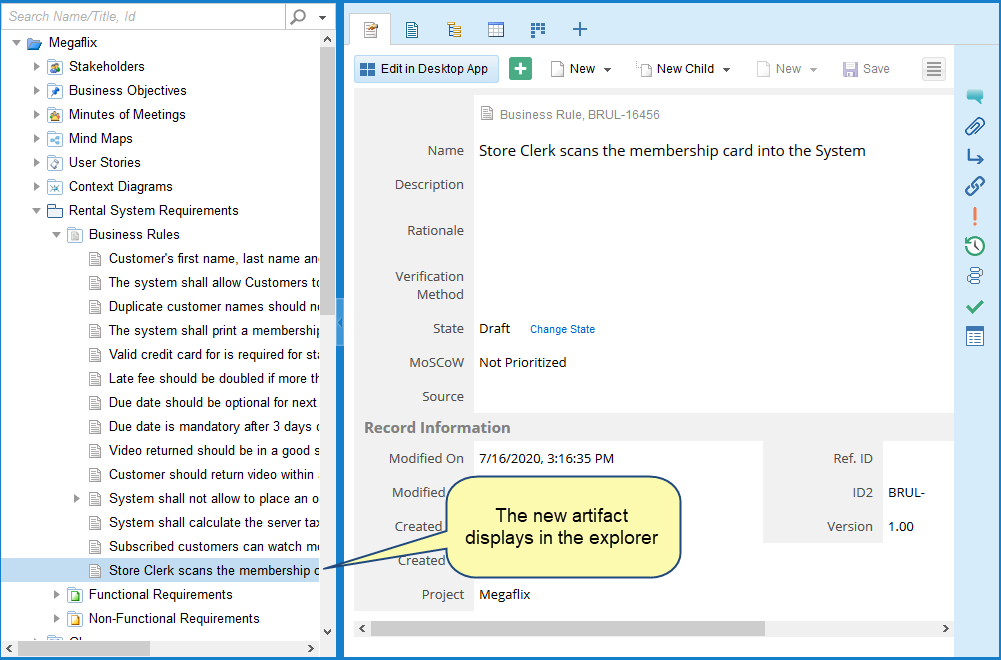
Viewing traceability link created between the artifacts is similar as shown in the step 1.3 from Traceability Widget
Similarly, you can create traceability between comment’s artifact and Requirements, Issues.
NOTE:
- The Add as menu shows artifact types that are opened earlier.
- If a specific artifact type is selected in the Add as menu, all the data is prepopulated in the window.
- The selected text becomes the Title of the artifact
- If you select multiple paragraphs of a Comment’s text, the first paragraph will be considered as the Title.
- The system automatically creates the traceability between the two artifact types provided that a linking rule is defined between the artifact types.
Related Articles
Creating Traceability by inserting artifacts in Rich Text Fields using Quick Explorer
How to create traceability by inserting artifacts and issues in rich text fields
Revised: Jule 16th, 2020